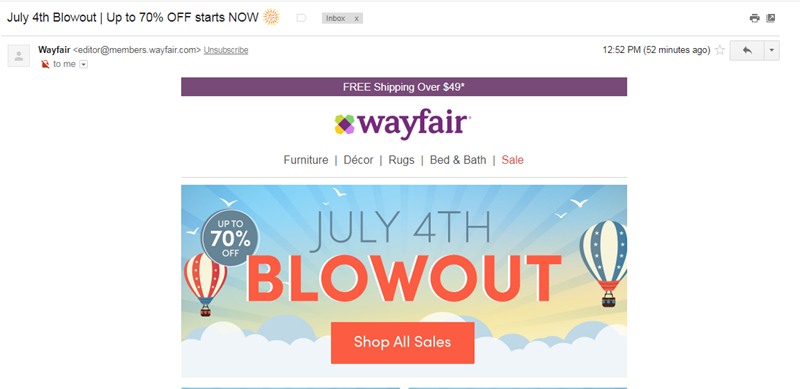
Smart marketers know the awesome power of email for driving engagement and creating loyal, long-term customers.
But traditional email marketing – with content that adapts to each of your customers’ individual needs – just doesn’t cut it anymore.
Over the past five years, two of the biggest shifts in email have been the rise of personalized, story-based marketing and the fruition of billions of dollars invested in dynamic pricing for online travel agency infrastructure in key verticals like travel and hospitality.
But marketers face a mighty challenge: you have to build credibility, create personalized marketing at scale and accurately deliver the ever-changing pricing and inventory that comes along with many industries … or risk losing customers to your competitors who can.
Creating personalized, real-time email campaigns is a challenge
One thing’s for sure: ESPs aren’t equipped to help marketers compete on real-time pricing and availability. Why? Integrating your product catalog with an ESP is a massive undertaking, requiring excessive time and organizational alignment to get the job done.
And if your team doesn’t have a solid understanding of proprietary protocols and scripting languages, good luck using that data once the integration is complete.
Most product catalogs can’t track trends on product views, searches and sales – and even if yours does, that data may not be sent to your ESP for 24 hours, leaving you with stale promotions and unhappy customers.
ESPs are great at sending millions of messages at once, but they can’t drive engagement with dynamic content generation like data visualization, social proof or automatically updating email content on the fly.
And speaking of automation, productivity is challenging when you have to hand-code, design and assemble every single email you send. Trying to manage the production process while pricing is constantly changing is a major headache.
Finally, managing separate programs for each of your campaigns – as opposed to using the same intelligent app to power, say, your cart abandonment emails and your weekly newsletter – is another productivity killer.
The bottom line? Without a solution that lets you deliver accurate, real-time pricing and inventory that drives engagement and improves productivity, you’re making it too easy for your competitors to win.
3 ways to win with real-time pricing and inventory
Real-time email content that answers your customers’ biggest needs at the moment of open is a must-have. It builds trust with your customers because they know you can rely on your brand for accurate, up-to-the-second information. Here are just a few ways that brands in the travel and hospitality industry are using real-time, personalized email content.
Boost conversions with real-time pricing
Picture this: You receive an email promoting a super affordable cruise. It just so happens that you could really use a vacation, so you click on the offer. But, wait! The offer on the website is more expensive than the one promoted in the email. You feel misled and unsubscribe from that brand’s emails.
This scenario is far too common in the travel and hospitality industry, where prices and inventory are constantly changing. If your email content doesn’t match your website content and doesn’t update in real-time, your customers could lose trust in your brand altogether.
But with real-time pricing, you make it easy for your customers to complete a purchase because all of the information in your email is accurate and up-to-date.
Re-engage customers with irresistible deals
According to CPC Strategy, 68% of online shoppers abandon their cart. That’s why an appropriately-timed abandoned cart email is a must-have for every marketer.
A good abandoned cart email will automatically display an item or items that your customer recently added to their cart. A great abandoned cart email will include live pricing and inventory to let them know that they have limited time to act. It’s the perfect way to drive additional urgency and engagement in your campaigns.
Help customers score the best airline seats
If you’re a busy traveler, the last thing you want to worry about is choosing the right airline seat. Imagine being able to see a live map of all the available seats on your flight, including prices and upgrades?
That’s one way airlines are using real-time pricing and inventory to drive incremental add-ons in their emails. Upgrades are a huge source of revenue across industries, and providing accurate, real-time upgrade information right in your emails makes it easy for customers to purchase add-ons quickly and easily.
And while you’re at it, why not a real-time flight status to your email? Your customers will love the convenience, and it’s a great way to build trust.
Create better experiences with real-time pricing and inventory
Delivering emails that contain real-time pricing and inventory is one of the best ways to build trust with your customers. Want to learn about even more ways that innovative brands are using real-time content? Check out our eBook, the Movable Ink Real-Time Pricing Solution.
Author : Kristen Dunleavy
This article originally appeared on Movable Ink Blog













